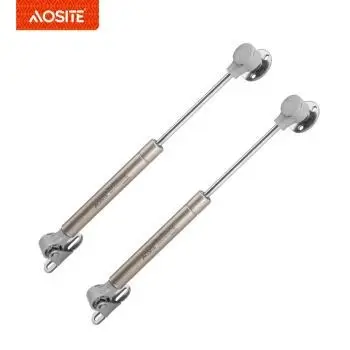Aosite, since 1993


High-Quality China Gas Spring Lid Stay for Hydraulic Lids – Zinc Alloy Standard, Randam Stop
Cabinet GAS SPRING AND ITS OPERATION A cabinet gas spring consists of a steel cylinder containing gas (nitrogen) under pressure and a rod which slides in and out of the cylinder through a sealed guide. When the gas is compressed by the retraction of the rod, it produces a force in return, acting...
Relying on the strong technical support of the R&D department, we are now one of the most reliable suppliers of kitchen sliding drawer rack, Drawer Slide Telescopic, stainless steel door handle in China. We'll be satisfied to supply you a quotation up on receipt of the detailed needs. The connotation of our corporate culture is to take development as the main line, innovation as the driving force, organizational goals as the basis, and developing within the framework of legal system and social ethics. We implement the quality concept of giving equal importance to appearance and interior and the service consciousness of putting the customer first.
Cabinet GAS SPRING AND ITS OPERATION
A cabinet gas spring consists of a steel cylinder containing gas (nitrogen) under pressure and a rod which slides in and out of the cylinder through a sealed guide.
When the gas is compressed by the retraction of the rod, it produces a force in return, acting like a spring. Compared to traditional mechanical springs, the gas spring has an almost flat force curve even for very long strokes. It is therefore used wherever a force is required that is in proportion to the weight to be lifted or moved, or to counter-balance the lifting of movable, heavy equipment.
The most common applications may be seen on furniture doors, in medical and fitness equipment, on motor- driven blinds and canopies, on bottom-hinged dormer windows and inside supermarket sales counters.
In its simplest version the gas spring consists of a cylinder and a piston rod, on the end of which a piston is anchored, which accomplishes cycles compression and extension of the cylinder through a sealed guide. The cylinder contains nitrogen gas under pressure and oil. During the compression phase the nitrogen passes from below the piston to the upper part through channels.
During this phase the pressure inside the cylinder, due to the low volume available caused by the entering of the piston rod, is rising generating the force increment (progression). By varying the cross section of the channels the gas flow may be adjusted to slowing down or to speed up the rod sliding speed; changing the combination of cylinder/piston rod diameters, the length of cylinder and the oil quantity the progression can be changed.
All of our colleagues always firmly believe that in the fierce competition, only by relying on our own continuous accumulation of technology can our Zinc Alloy Standard Randam Stop Hydraulic Lid Stay win a larger market. Our goal is to ensure that our commitment to develop the future with technology is reflected in our development process. Whether it is daily operation management or completion of various major tasks, our employees have shown a spirit of unity and overall cooperation.
Mob: +86 13929893479
Whatsapp: +86 13929893479
E-mail: aosite01@aosite.com
Address: Jinsheng Industrial Park, Jinli Town, Gaoyao District, Zhaoqing City, Guangdong, China.








































































































